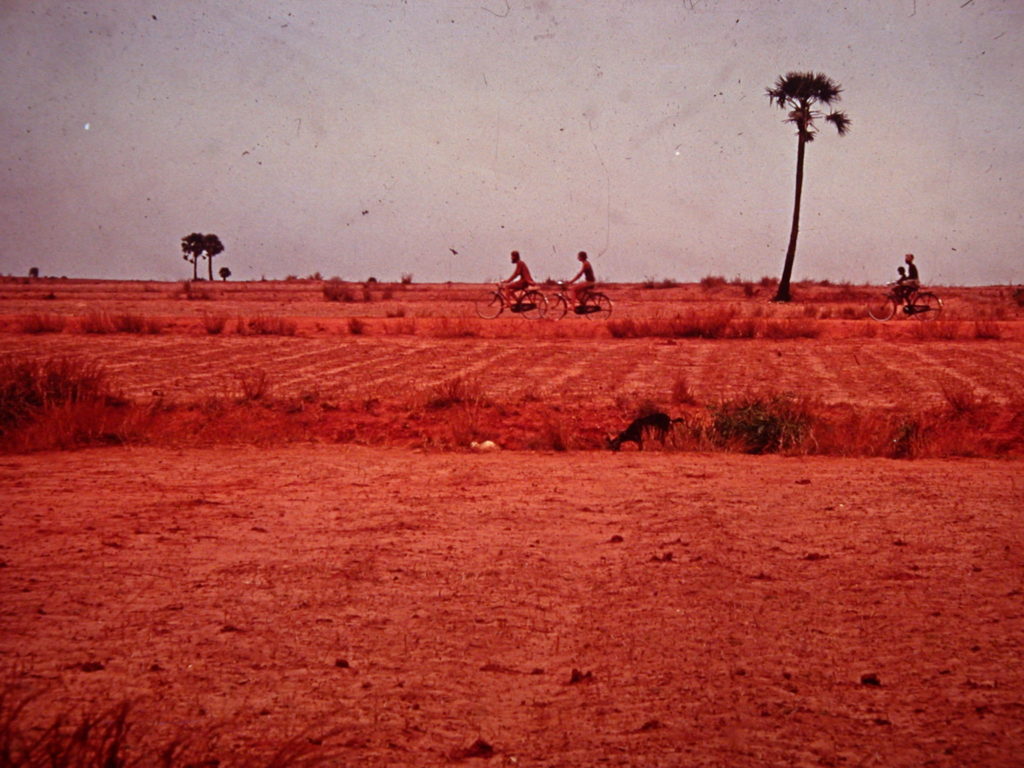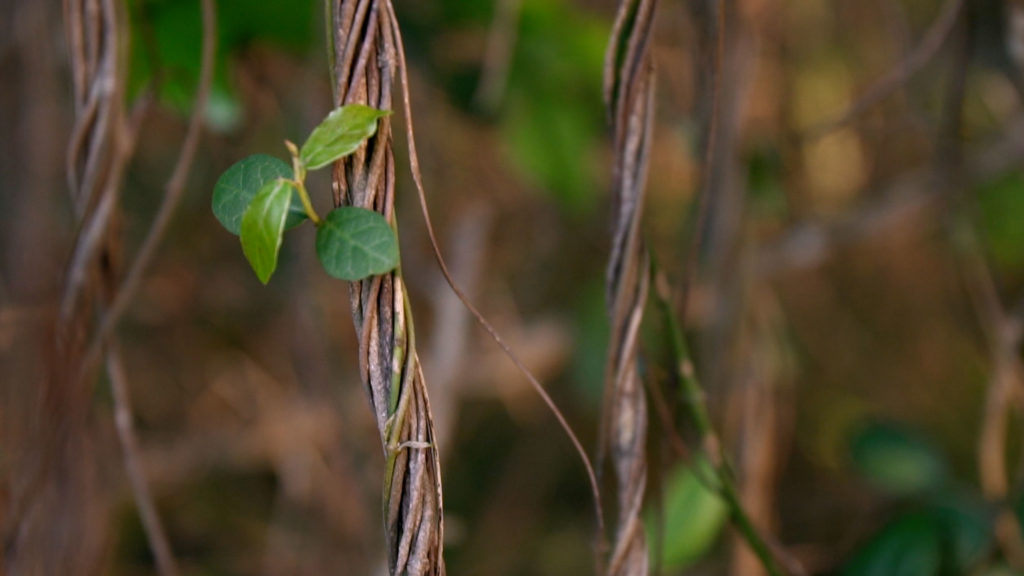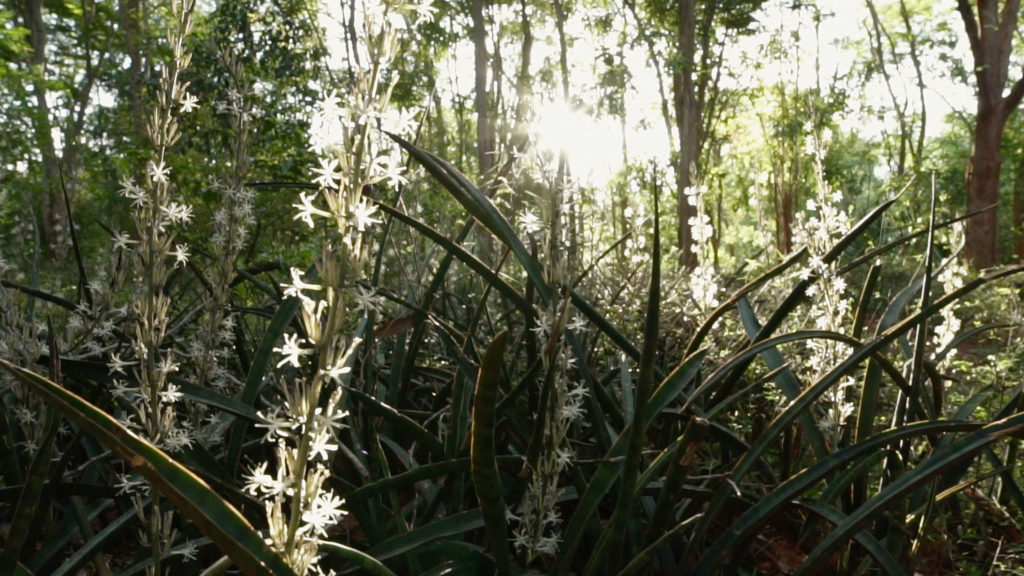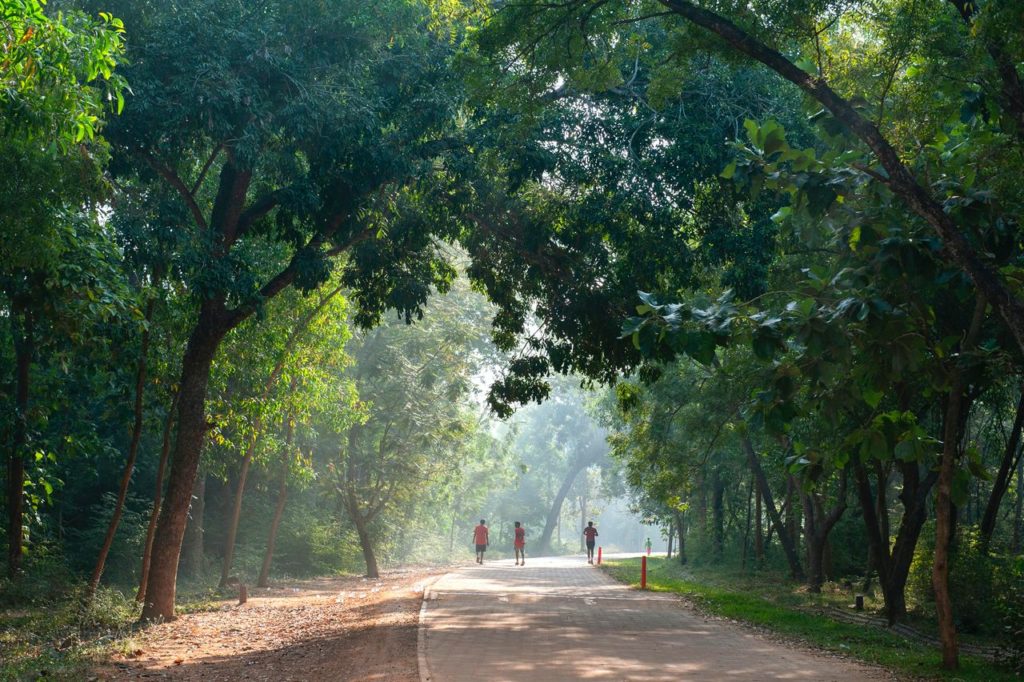Auroville green spaces: a labour of love
Following our profile of Darkali Forest Park, we present here the ‘bigger picture’ of Auroville’s afforestation work and greenery: how it came about, the regeneration of the native Tropical Dry Evergreen Forest (TDEF), the important documentation undertaken, and the contribution to the wider ecological picture. The 1250 acres of Auroville’s forests and green spaces have been nurtured for more than four decades by the Auroville Forest Group – a collective of about 80 Aurovilians. But now, with the group’s entire budget abolished and with continued unauthorised land clearing, the future of Auroville’s greenery and its caretakers are in question.
A red desert
In the late 60s, the Auroville plateau was an extremely harsh environment with its highly eroded red lateritic soil that was as hard as iron. The summer temperatures reached over 40°C with a humidity of 90%, and the long dry season was prone to dust storms. At that time there was no larger environmental wisdom or vision; it was the basic necessity for water and shade that spurred the initial environmental restoration effort. Later, in 1982, the Auroville Forest Group was formed as the land pioneers grouped together to work in a more efficient and coherent way.
“Zero run-off” mission
Soil and water conservation were fundamental to ensure the seasonal monsoon rains would infiltrate into the subterranean aquifers, providing water security for the whole of Auroville and a good part of its bioregion. With the intensity of the Northeast monsoon, where 300 mm of rain can fall within a 24-hour period, the success of any sapling plantation depended on halting rainwater run-off. To address this, many kilometres of contour bunding were dug by hand on the open land that slopes from 50 metres to sea level over a distance of 4.7km. Gully plugs, earth dams and granite check dams were constructed that carried rainfall runoff across the watershed.
This effort to maintain “zero run-off” has continued as Auroville developed and as impermeable surfaces, paths and roads were built. To this day, soil and water conservation remain essential.

Planting in the early days
In the early days, tree planting was a collective grassroots movement where saplings were planted in a passionate, albeit haphazard way. Much was learned from the local villagers, and vice versa. Slowly, plant nurseries were set up and challenges such as seed germination were overcome.
The plantation areas were nurtured with manual watering and mulched whenever possible. The plantations were not contiguous, which made care and protection from grazing and browsing by the local livestock very challenging.
As the yearly seasonal plantation continued, the pioneers experimented with many species of plants, but most failed to get established. Certain species like the Acacia auriculiformis, an exotic wattle from Australia, outperformed the others. With its nitrogen fixing capacities, it thrived and grew rapidly even with very little topsoil. And when it died naturally after 25-35 years, it provided firewood and timber.
By the late ‘80s, a hybrid forest with an assemblage of exotic and native species emerged.

Researching the Tropical Dry Evergreen Forest
The newly grown ’pioneer’ forest created optimum conditions for the next stage of development. After an in-depth study of the tropical indigenous vegetation type of the area and its dynamics, the native species of the area were planted in volume in the mid to late 90s.
Supported by the Pitchandikulam Bio-research Centre and the Shakti Herbarium (two Auroville forester initiatives), and with funding from the Foundation for the Revitalization of Local Health Traditions (Bangalore) and the European Commission, work began on researching the native Tropical Dry Evergreen Forest (TDEF).
During this research period, with guidance from the French Institute in Pondicherry and Pondicherry University, a team from Auroville set out to locate potential remnants of the TDEF. These remnants were found in sacred groves surrounding temples and other small pockets which had escaped urbanisation or complete deforestation. Visits to 85 sites were then arranged for plant identification, phenology, sample collection for the newly created herbarium, and seed collection for germination and propagation in the Auroville nurseries.

Restoring endemic diversities
It was during this period that the work of interplanting the hybrid Auroville pioneer forest with the native TDEF species in volume was initiated. One key advantage of planting these native species is that they are adapted to the conditions of the geographical location and are drought resistant. This means there is little or no watering required after planting under the pioneer canopy. With minor aftercare, mulching and management of opportunistic species around the sapling pit, a survival rate of 90% has been achieved.
As these TDEF species have become more established, there is a natural transition from the hybrid forest to a more native TDEF prominent ecosystem. This has become the single planting focus of the Forest Group, and as of today, half a million TDEF saplings of over 200 species have been planted.
Presently more than half the TDEF species reach maturity and regenerate on their own, a clear indication of success. The vibrant growing forest has become a valuable TDEF gene bank, securing these rare species for the future.
Flourishing fauna
As the forest flourished, birds returned quickly, benefiting from a diverse set of flowers, fruiting plants and an increasing variety of insects. Today, the bird list has reached over 100 species. More than 200 species of butterflies have been attracted to this new environment. The reptile population has also increased, and the common mammal population has grown, making the forest a habitat for the Indian mongoose, civet cat and the jackal. In recent years, even the porcupine and spotted deer have made their way back to the area, and occasional sightings of the jungle cat and the rusty spotted cat indicate a thriving ecosystem.


Funding the venture
Funding support over the decades has come through various beneficial partnerships. Governmental and non-profit sources have at times provided much needed resources. Auroville units, carbon offset programmes, and the generous donations of well-wishers – starting with Auroville International centres across the globe – have also contributed greatly to the forests’ advancement.
Still, what is needed to establish and sustain such vast natural areas has regularly exceeded available funding. Though creative income streams (like a Forest Fund and sales of forestry products) have helped, meeting the costs has always been a challenge. Through it all, the dedication of Forest Group members has gone above and beyond, with some drawing from personal life savings, inheritances or seasonal work abroad merely to keep environmental progress moving forward.

And now?
The Forest Group continues their important documentation work to comprehensively survey the land. By recording details of species’ maturity and regeneration, their goal is to develop thoughtful long-term management plans to preserve these forests for generations to come, and to serve as an example for other such places in India. Studies have shown that the expansive Auroville green spaces represent a verdant oasis — one of the largest contiguous tropical dry evergreen zones in the region. Recently it was estimated that: the annual value in Indian rupees of the carbon sequestered in Auroville forests is Rs 3,56,32,360; of air pollution removed is Rs 36,22,334; and of run-off avoided is Rs 41,192.
For years, Indian forest officials, researchers from around the globe, and school groups have come to learn from the Auroville forest model. This work to establish and protect the biodiversity of the TDEF within the Auroville green spaces benefits both Auroville and the surrounding bioregion, and has larger benefits for future generations.
And yet, in June 2023, the AVFO cut all communal budgets allocated to forestry work in Auroville, including foresters’ monthly stipends and employees’ salaries. Today, the survival of these precious green resources relies entirely on the selfless generosity of all.
Extracted from Voice of Auroville, Issue 03, September 2023
Adapted from a report by the Forest Group

